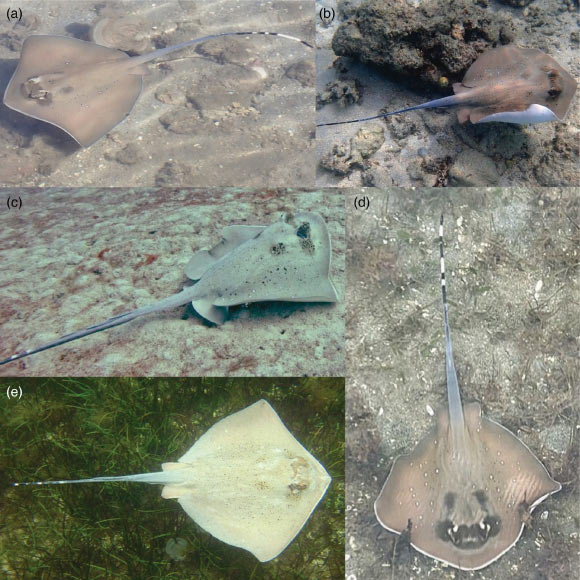Now Reading: New Blue-Spotted Maskray Species Unearthed in Fiji
-
01
New Blue-Spotted Maskray Species Unearthed in Fiji
New Blue-Spotted Maskray Species Unearthed in Fiji

Swift Summary
- A new stingray species, Neotrygon romeoi, has been identified in Fijian waters by marine scientists.
- neotrygon romeoi belongs to the blue-spotted maskray complex within the stingray genus Neotrygon, widely spread across the Indo-West Pacific region.
- This species was previously mistaken for Neotrygon kuhlii and Neotrygon trigonoides due to similar features but stands out with its distinctive traits:
– Broad, angular snout.
– Long claspers in adult males.
– Thorn-like spines from neck to tail base.
– Brown back adorned with unique markings and black spots, particularly near the face.
- Nine specimens were sourced ethically from the Suva Fish Market through local fishermen; no rays were harmed explicitly for this research.
- Researchers highlight concerns about overfishing, limited habitat range, and unknown life history of rays like N.romeoi, advocating protective measures under Fiji’s Endangered and protected Species Act.
- The revelation emphasizes marine biodiversity conservation efforts in Fiji.
Indian Opinion Analysis
India shares rich marine biodiversity akin to Fiji’s unique habitats, making discoveries like this vital for global conservation practices. The identification of a new stingray species highlights how targeted scientific studies can uncover lesser-known organisms that might otherwise be overlooked or threatened by human activities such as fishing or habitat degradation. For Indian researchers and policymakers working on coastal ecosystem conservation – notably protecting endemic sharks and rays – Fiji’s model shows how effective legislation combined with research can sustain vulnerable populations while balancing trade regulation.
As India maintains vast coastal resources along both eastern and western shores, prioritizing documentation of native species could lead to similar discoveries while aiding international collaborations. Strengthened legal frameworks safeguarding thes ecosystems would also align India more closely with global standards in preserving maritime biodiversity hotspots.




























